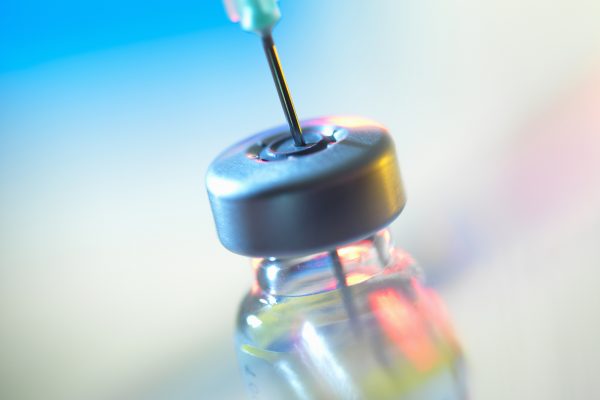
Patients with large B-cell lymphoma (LBCL) who are primary refractory or relapse within twelve months of first-line therapy often have poor outcomes. Lisocabtagene maraleucel (liso-cel) has demonstrated efficacy and manageable safety in third-line or later LBCL. In the TRANSFORM trial, liso-cel demonstrated superior efficacy vs. the current standard of care for second-line therapy of primary refractory or early relapsed LBCL, along with a manageable safety profile.
Patients with large B-cell lymphoma (LBCL) who are primary refractory or relapse within twelve months of first-line therapy often have poor outcomes with second-line immunochemotherapy-based approaches. For these patients, the standard of care (SOC) is platinum-based salvage immunochemotherapy followed by high-dose chemotherapy and autologous haematopoietic stem cell transplantation (HSCT) in responding patients. However, only 30% of these patients receive stem cell transplantation, and only some of those achieve long-term remission. Lisocabtagene maraleucel (liso-cel), an autologous, CD19-directed chimeric antigen receptor (CAR) T-cell therapy, has previously demonstrated efficacy and manageable safety in third-line or later treatment of relapsed or refractory LBCL. The phase 3 TRANSFORM trial compared efficacy and safety of liso-cel vs. current SOC as second-line therapy in patients with primary refractory or early relapsed LBCL intended for autologous HSCT.
TRANSFORM is a global, phase 3 study conducted in 47 sites in the USA, Europe, and Japan, comparing liso-cel vs. SOC as second-line therapy in patients with primary refractory or early relapsed LBCL. Eligible patients were aged 18-75 years, considered candidates for autologous HSCT, had LBCL refractory to or relapsed within twelve months after initial response to first-line therapy, Eastern Cooperative Oncology Group performance status score of 1 or less, adequate organ function, and PET-positive disease per Lugano 2014 criteria before randomisation. All patients underwent leukapheresis before being randomly assigned (1:1) to either the liso-cel (total target dose of 100 × 10⁶ CAR+ T cells intravenously) or the SOC group. SOC consisted of three cycles of salvage immunochemotherapy delivered intravenously, followed by high-dose chemotherapy and autologous HSCT in responders. Primary endpoint was event-free survival (EFS). Key secondary endpoints were complete response rate, progression-free survival (PFS), and overall survival (OS).
In total, 184 patients were assigned to liso-cel (n= 92) or standard of care (n= 92) groups. At the data cut-off for this interim analysis (March 8, 2021), the median follow-up was 6.2 months. Median event-free survival was significantly improved in the liso-cel group compared to the SOC group (10.1 vs. 2.3 months) (stratified HR[95%CI]:0.35[0.23-0.53]; p< 0.0001). Event-free survival rates at six months were 63% vs. 33%. Treatment with liso-cel also resulted in a higher complete response rate (66% vs. 39% of the patients; p< 0.0001). Patients who achieved a complete response in the liso-cel group had longer median duration of response than those in the SOC group (median not reached vs. 14.5 months). Overall response rates were 86% vs. 48%. A significant improvement in PFS was observed in the liso-cel group compared with SOC (stratified HR[95%CI]: 0.41[0.25-0.66]; p= 0.0001). There were thirteen deaths in the liso-cel group and 24 deaths in the SOC group. OS was longer in the liso-cel group (stratified HR[95%CI]: 0.51 [0.26-1.00]; p=0.026).
No patients in either group discontinued treatment due to toxicity, and no patients in the liso-cel group had dose modifications for toxicity. In the SOC group, four patients switched salvage regimens for an adverse event, and dose modification for toxicity was reported in twelve patients. The most common grade ≥3 adverse events in the liso-cel and standard-of-care groups were, respectively: neutropenia (80% vs. 51%), anaemia (49% vs. 49%), thrombocytopenia (49% vs. 64%), and prolonged cytopenia (43% vs. 3%). Grade 3 cytokine release syndrome and neurological events, which are associated with CAR T-cell therapy, occurred in one (1%) and four (4%) of the 92 patients in the liso-cel group, respectively (no grade 4 or 5 events). Serious treatment-emergent adverse events were reported in 48% of the patients in both groups. No new liso-cel safety concerns were identified in the second-line setting. There were no treatment-related deaths in the liso-cel group and one treatment-related death due to sepsis in the standard-of-care group.
Liso-cel demonstrated superior efficacy vs. standard of care in terms of EFS, complete response rate, and PFS, along with a manageable safety profile, as second-line treatment for patients with LBCL primary refractory or relapsed within twelve months of first-line therapy. Therefore, the results of the TRANSFORM study support the use of liso-cel as a new second-line treatment option for these patients.
Reference